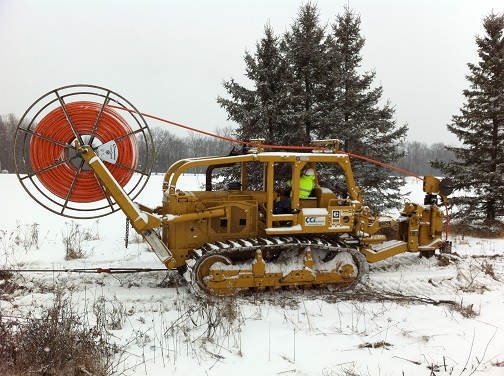Broadband Technology Opportunities Program
The Broadband Technology Opportunities Program (BTOP) is an approximately $4 billion grant program administered by NTIA to help bridge the technological divide; create jobs; and improve education, health care, and public safety in communities across the country. Funded by the American Recovery and Reinvestment Act of 2009, BTOP projects are deploying broadband Internet infrastructure, enhancing and expanding public computer centers, and encouraging the sustainable adoption of broadband service.
See also: NTIA's Recovery Act broadband programs
Related content
Broadband Expanding Possibilities for Students in West Virginia and the Nation
For those of us who grew up in the 1960s and 1970s, dissecting a frog in middle school biology was a messy and smelly experience. Technology has made that a much cleaner experience in today's middle school biology classes – while also saving thousands of innocent frogs.
During a recent visit to Southside K-8 School in McDowell County, W.Va., I witnessed how technology allows students to dissect not just frogs online, but starfish and other amphibians as well. As a web-based program, this requires real bandwidth. Such activities would not have been possible last year when Southside was using two slower 3 Mbps-speed Internet connections for the whole school, which allowed for only a few students to work online at the same time.
With the help of a $126 million NTIA broadband grant, the school now has access to a fiber-based 100 Mbps connection that allows any Southside student to get online. NTIA’s grant has produced real results in this classroom in McDowell County and throughout West Virginia. It has helped bring a fiber broadband connection to all 750 public elementary and high schools in the state -- an important and proud milestone for West Virginia.
Bringing Broadband to Schools in Rural Michigan
President Obama’s ConnectED proposal aims to bring next-generation broadband, with speeds of at least 100 megabits per second and high-speed wireless, to K-12 schools across the nation.
Nowhere is the need greater – or the challenge tougher – than in rural America. High-speed Internet connections can give students living in remote communities access to classes, teachers and instructional materials that those in urban regions may take for granted. But with so many rural areas still lacking advanced telecommunications infrastructure, schools in these places often remain cut off from the promise of broadband.
In Michigan, a non-profit broadband provider called Merit Network is tackling this challenge by connecting K-12 districts in some of the most far-flung reaches of the state.

Merit, which owns and operates a statewide research and education network, dates back to the early academic and government networks that evolved into today’s Internet. It was established in 1966 by the University of Michigan, Michigan State University and Wayne State University.
700 MHz Public Safety Projects FAQs
FREQUENTLY ASKED QUESTIONS (FAQ)
Broadband Technology Opportunities Program (BTOP) 700 MHz Public Safety Projects:
Next Steps upon Completion of Negotiations with the First Responder Network Authority (FirstNet) for Use of its 700 MHz Public Safety Broadband Spectrum
